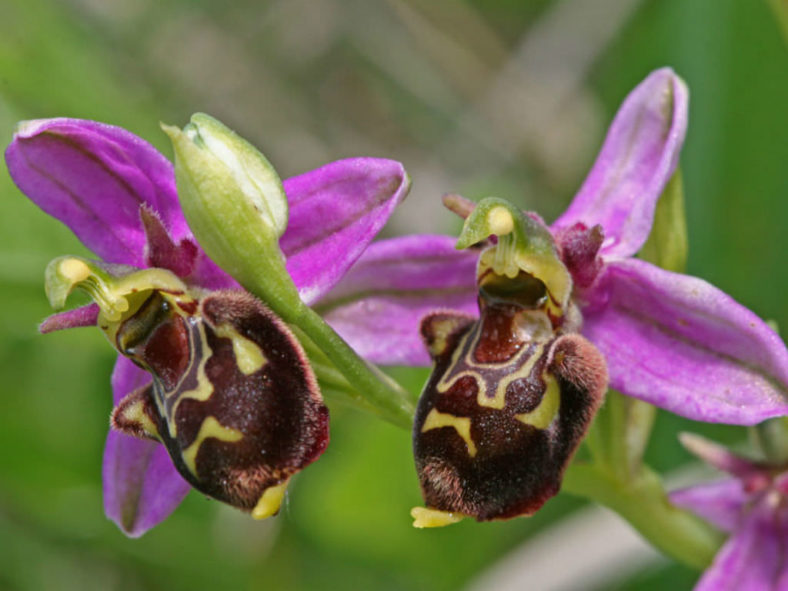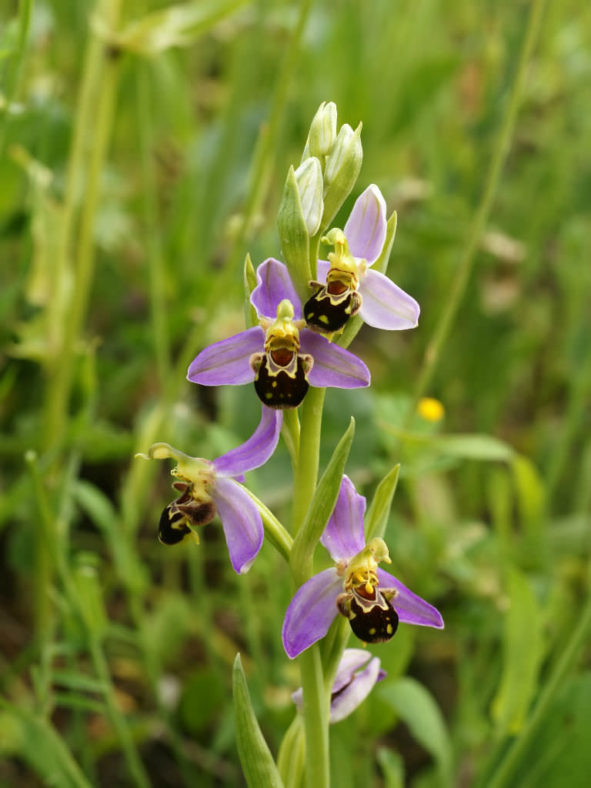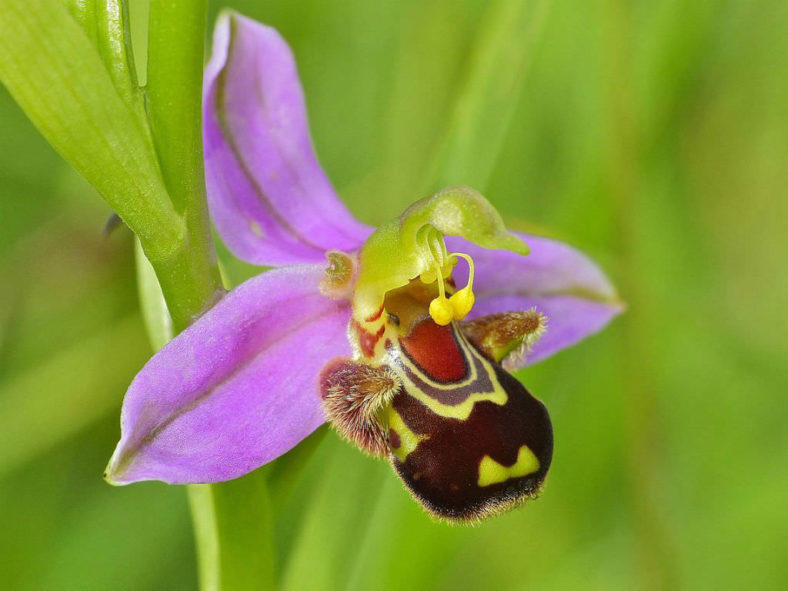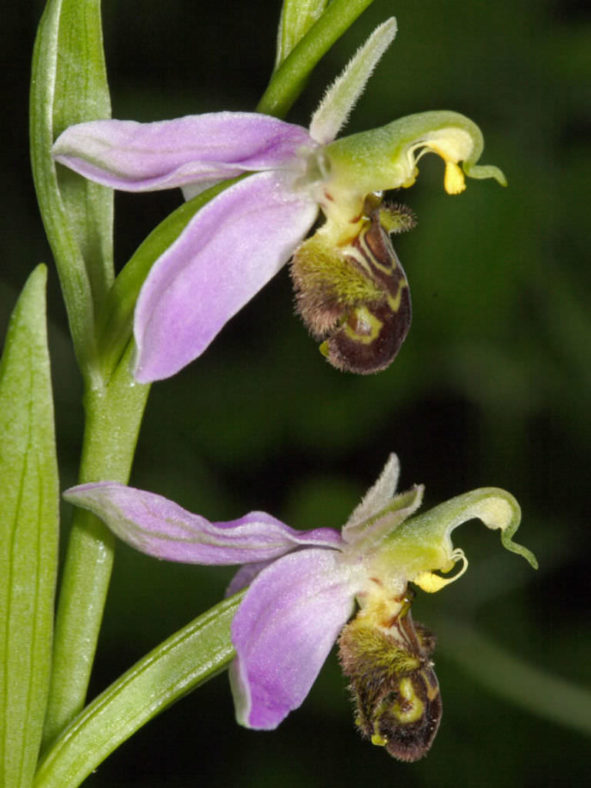Scientific Name
Ophrys apifera Huds.
Common Name(s)
Bee Orchid
Synonym(s)
Arachnites apiferus, Ophrys albiflora, Ophrys aquisgranensis, Ophrys arachnites, Ophrys asilifera, Ophrys austriaca, Ophrys botteronii, Ophrys chlorantha, Ophrys epeirophora, Ophrys friburgensis, Ophrys holoserica, Ophrys immaculata, Ophrys integra, Ophrys jurana, Ophrys mangini, Ophrys oestrifera, Ophrys purpurea, Ophrys ripaensis, Ophrys rostrata, Ophrys saraepontana, Ophrys scolopax subsp. oestrifera, Ophrys scolopax var. oestrifera, Ophrys trollii, Orchis apifera, Orchis holoserica, Orchis oestrifera
Scientific Classification
Family: Orchidaceae
Subfamily: Orchidoideae
Tribe: Orchidinae
Genus: Ophrys
Flower
Color: Brownish-red with yellow markings
Bloom Time: Mid-April to July
Description
Ophrys apifera is a perennial herbaceous plant that grows up to 20 inches (50 cm) tall. This hardy orchid develops small rosettes of leaves in the fall. They continue to grow slowly during the winter. Basal leaves are ovate or oblong-lanceolate. The upper leaves and bracts are ovate-lanceolate and sheathing.
The plant blooms from mid-April to July, producing a spike with 1 to 12 flowers. The flowers have large sepals with a central green rib and vary in color from white to pink, while petals are short, pubescent, and yellow to greenish. The labellum is trilobed, with two pronounced humps on the hairy lateral lobes. The median lobe is hairy and similar to the abdomen of a bee. It is quite variable in the pattern of coloration but usually brownish-red with yellow markings. The gynostegium is at right angles, with an elongated apex.

How to Grow and Care
Generally, orchids can be grouped into three temperature categories: cool, warm, and intermediate. First, buy a high-low thermometer to measure the temperature range in your orchid location. After that, choosing a suitable orchid is simple. As with light, some orchids easily adapt to more than one temperature range.
Most orchids we grow indoors come from the tropics, and most parts of the tropics are much more humid than the average living room. Therefore, orchids grow better if you can boost the humidity in their immediate growing area by grouping your plants or placing them in a dry well. First, create a dry well by placing plastic lattice or pebbles on a tray, then add water to just below the lattice or top of the pebbles. Next, place your potted plants on top of the lattice or pebbles.
Anyone who has ever watered an orchid knows that most of what you pour in runs out almost immediately through the bottom of the pot. Because orchids are potted in bark mix rather than potting soil, they need to be watered differently.
See more at How to Grow Orchids Indoors.
Origin
Ophrys apifera is widespread across central and southern Europe, as well as North Africa and the Middle East.
Links
- Back to genus Ophrys
- Plantpedia: Browse flowering plants by Scientific Name, Common Name, Genus, Family, USDA Hardiness Zone, or Origin
Photo Gallery
Click on a photo to see a larger version.




